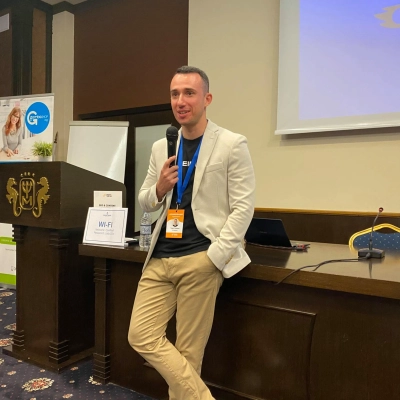Learning from Customer Experience Failures: Insights from Business Leaders
Customer experience failures can be costly, but they also offer valuable lessons. This article delves into the insights gained from business leaders who have navigated these challenges firsthand. Discover practical strategies and expert advice on improving customer interactions, from co-creating experiences to implementing proactive communication.
- Co-Create Learning Experiences with Families
- Align Service with Client Operations
- Design Onboarding for Product Value Delivery
- Conduct Pre-Design Consultations to Mitigate Risks
- Implement Clear Ownership for Project Success
- Prioritize Proactive Communication with Clients
- Integrate Early Feedback Loops in Projects
- Develop Backup Plans for Cultural Experiences
- Establish Clear Communication Channels with Clients
- Consider Long-Term Impact of Customer Interactions
- Personalize Solutions for Unique Customer Needs
- Validate Campaigns with Direct Customer Feedback
Co-Create Learning Experiences with Families
One of the toughest lessons I've learned came from a family who chose our self-paced program. On paper, it was perfect: flexibility, autonomy, and freedom. However, after a few months, their child was struggling, missing live interaction, and falling behind. It wasn't the curriculum that failed; it was the way we had sold them the wrong option.
This was an important lesson in education: customer experience does not mean offering the most choices, but helping families find the right option for them. Since then, we have redesigned our onboarding process at Legacy Online School. We now educate families more deeply about different learning styles, offer shorter trial periods, and check in early enough in the learning experience so that students can make adjustments if necessary. Our Learning Support Specialists now reach out to families before students become frustrated.
One failure changed us. Today, we do not just sell or provide programs; we co-create learning experiences with families. It was a shift from focusing on features to emphasizing fit, and it has made a significant difference.

Align Service with Client Operations
We learned one of the hardest lessons through a fast-growing SaaS client who ended their contract. They didn't end the relationship because we underdelivered. In fact, we delivered above and beyond expectations. They had assigned a huge demand to a small internal team. We were executing on a multi-channel strategy, exceeding their growth targets, producing creative assets ahead of schedule, and measuring significant momentum in terms of engagement. We thought we were excelling. On paper, everything was great. However, it was impossible for their small team to process and act on what we were doing. There were too many approvals, too many feedback cycles, and too many updates. What felt like evident momentum to us felt like chaos to them.
The big lesson: velocity without alignment breaks trust. Now we kick off every engagement with a mapping of not only the marketing goals but also their internal decision rhythms: who needs to be a part of the process, who can realistically engage internally, and where we need to slow things down to create traction. We even implemented an "internal bandwidth audit" during our onboarding process. Since implementing this new process, we've experienced less friction, more connection, and increased client satisfaction. It taught us that great service is not about doing more work, but about aligning with how the client operates.

Design Onboarding for Product Value Delivery
I once worked with a startup that had a strong product but overlooked how critical the customer experience would be in those first interactions. They assumed that once a customer signed up, everything would flow naturally, but what actually happened was the opposite. Customers logged in, felt overwhelmed by the interface, and left before they could see the product's true value. This was frustrating because the team had worked so hard on building features yet lost people at the very first hurdle. The data confirmed it with churn rates climbing week after week, and the founders realized they had underestimated the importance of onboarding.
The lesson was simple but powerful: A product's value is only as strong as the experience that delivers it. We helped them design a proper onboarding system that guided users step by step, supported with clear tutorials and a responsive support team ready to answer questions. Instead of leaving customers to figure things out on their own, the startup made sure people felt supported from the first click. Within a few months, retention improved significantly, and feedback turned positive because users finally understood what the product could do for them.
The change also reshaped how the founders viewed their business. They began to see customer experience not as an afterthought but as part of the product itself. It was no longer enough to build strong features; they had to make sure those features were accessible, usable, and aligned with customer expectations. This mindset created a culture where the team consistently tested and improved every touchpoint in the customer journey.
As managing consultant and founder of Spectup, having worked with many startups and investors, I would suggest treating customer experience as an integral growth lever. Failures are painful in the moment, but they often reveal blind spots that, once fixed, become the foundation for stronger relationships and more sustainable growth.

Conduct Pre-Design Consultations to Mitigate Risks
Through a critical incident of customer experience failure, I learned the importance of considering potential design challenges in advance. I had a history of not discussing the ramifications of decisions with my clients, assuming they were familiar with the physical consequences of their requests. During the installation phase, there were clearly issues that caused frustration for both of us, which delayed the project. This experience has taught me that these failures could have been avoided if we had acted proactively as designers in the first place. Aside from averting issues caused by a lack of understanding from the very beginning, I learned that acting proactively towards design requires a collaborative approach in building trust with clients.
To improve, I now conduct a detailed pre-design consultation with the client, outlining possible challenges associated with their vision and how we can work together to navigate these challenges. I also provide them with a comprehensive design brief that covers potential risks and outlines possible solutions we can explore together. We then discuss the risks and solutions together, and I document the meeting afterwards. This has since created a much more collaborative relationship with my clients, where they now feel included and have a clearer understanding of their role within the project as a whole. I measure my success by the number of surprises during the project, which means smoother executions and satisfied clients.

Implement Clear Ownership for Project Success
Failing to establish clear ownership was the mistake that taught me how fragile project execution can be.
On a large project we had, multiple teams assumed that "someone else" was handling a critical deliverable. That task slipped through the cracks, deadlines were missed, and our client felt disappointed (an avoidable failure that exposed the cost of vague accountability). It showed us how damaging unclear accountability can be—not just to delivery, but to trust.
Since then, we've applied this lesson by making ownership non-negotiable. Our work is divided with intent: a named lead, a marked deadline, and a route for escalation. That trifecta keeps our gears turning and makes it clear to our clients that every detail is accounted for.
Explicit ownership has become the lever that strengthens two sides of our business equation: operational discipline and client assurance.

Prioritize Proactive Communication with Clients
One lesson I learned from a customer experience failure was that delayed communication can be more damaging than the issue itself. In one case, a project hit unexpected delays, and because I hesitated to update the client until I had a full solution, their frustration grew. I realized that clients value transparency above perfection, so now I always communicate proactively, even if the update is simply that we are still working on a fix. Applying this lesson has strengthened trust, improved client relationships, and often turned potentially negative experiences into opportunities to demonstrate reliability.
Georgi Todorov
Founder, Create & Grow

Integrate Early Feedback Loops in Projects
We once rolled out a feature that customers hated. Complaints, low adoption, and support tickets piled up. However, leadership, including myself, dismissed it as "resistance to change." Months later, usage numbers plummeted, and we had to scrap the entire project.
That experience hammered home one crucial lesson: feedback is valuable data. Now, I treat customer feedback as an opportunity. Even a single unusual complaint can be a significant clue. Since then, I've integrated feedback loops into projects early on, through small tests, beta rollouts, and quick surveys, to ensure we don't waste time building something that no one wants.
Develop Backup Plans for Cultural Experiences
Our most significant guest mishap occurred when our Prague guide canceled the pottery workshop at the last minute due to a personal emergency. This forced the couple celebrating their anniversary to haggle for trinkets they didn't want to carry home, exposing not just the absence of systems for such emergencies but also the poor communication that caused disruption to their cultural trip. The lesson is to develop a good Plan B. I've created backup networks, emergency communications, and disaster contingency processes to preserve cultural experiences. Emphasis must be placed on community and artisan connections so that, in the absence of specialists, someone else can fill in and offer an experience. We need to create more durable systems that also protect the investment that customers make in authentic cultural experiences and uphold the integrity required to ask premium prices from sophisticated travelers.

Establish Clear Communication Channels with Clients
One client launch became a nightmare when we failed to get approval in time and we were two weeks late. To start with, the client was a bit behind schedule in our thinking. This project was reframed: having put up a clear status dashboard for all to see, adding an occasional five minute chat each week was all that was necessary.
The result was that every campaign came off 20% faster, even fewer revisions were needed, and client satisfaction scores all went up. Who won? What did we learn from this story? The moment we stop "communicating," it stops. However, now we listen regularly and make sure everyone gives back good lines of dialogue, so even when problems arise, at least things will not get lost in the shuffle.
I have learned that this difference in attitude is not due to a lack of virtue but arises from UNCLEAR COMMUNICATION. Even with "preconceived notions" that have been put in their heads by previous companies or failed partners, buyers can always make demand. If we don't align their expectations with their needs, then their disappointment will turn into rage very quickly, which in turn can damage your business reputation.

Consider Long-Term Impact of Customer Interactions
A customer once expressed disappointment over something that seemed minor at the time, but I did not hesitate to address it. That moment reminded me to view experiences through a long-term perspective. What may feel small today can have a bigger impact on a relationship tomorrow. I realized that addressing issues with short-term fixes is not enough. Every decision we make affects the future of our brand and the trust our customers place in us. Since that experience, I have focused on understanding feedback more deeply and considering its long-term implications.
This approach has helped me build stronger relationships with our customers from the very beginning. By thinking about how actions today shape tomorrow, I can make better choices that support loyalty and stability. I learned that long-term thinking strengthens trust while short-term thinking can quickly erode it. That lesson continues to guide how I approach every interaction with our customers and shape the future of our brand.

Personalize Solutions for Unique Customer Needs
A failure we experienced stemmed from not providing enough personalization. We offered broad solutions, and some customers felt their unique needs were overlooked. This experience taught us the importance of understanding our audience more deeply. We realized that treating all customers the same way limits our value. After reflecting on this, we began to focus on segmenting our audience and learning the specific challenges each group faces.
Since then, personalization has become a key principle in our approach. We design experiences that feel tailored and relevant to each customer. This shift has improved how we engage with our clients and strengthened their trust in us. That early failure showed us that one-size-fits-all solutions rarely succeed and that customers want to feel understood and supported in ways that matter to them.
Validate Campaigns with Direct Customer Feedback
A client's product launch failed due to incorrect assumptions about their target audience. The campaign development focused on brand team statements instead of customer interests. Although the campaign generated acceptable click-through rates, it failed to produce meaningful conversions.
I established a new standard that requires us to obtain direct customer feedback for major campaigns through Reddit user acquisition or $100 test ad spending. This approach has protected our clients and our organization from multiple instances of launching campaigns with inappropriate messaging.




